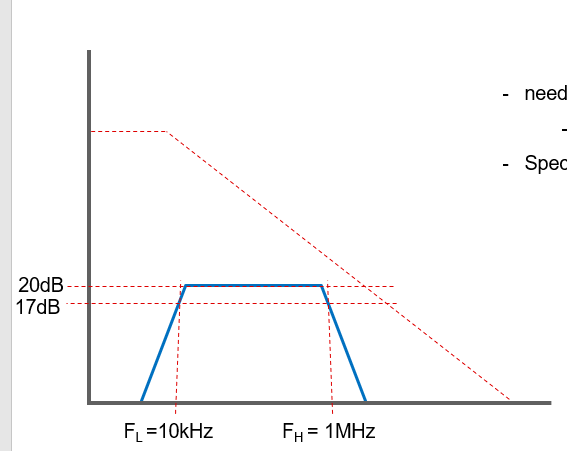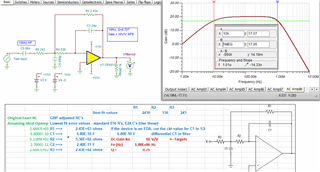Other Parts Discussed in Thread: OPA810
Hello,
I am designing a bandpass filter with a 20dB gain between 10kHz and 1MHz.The Input signal swing is +/- 10mVpp and the desired output swing +/-100mVpp.
Below is my TINA simulation of the BP filter I designed. I am not sure where my component selection went wrong.
Why is the gain response 15.43dB at 1MHz? This gain should be 17dB at 1MHz. Do I need to recalculate my C2 value?



Best regards,
Lucas Pucheta




